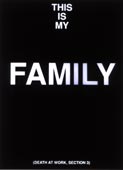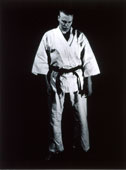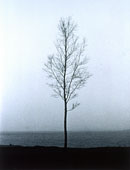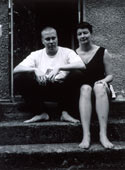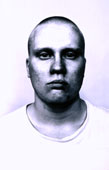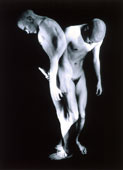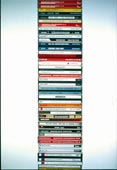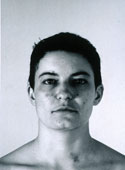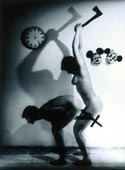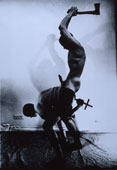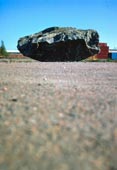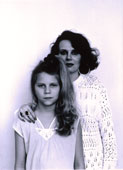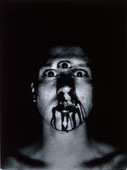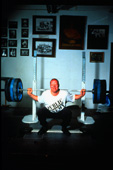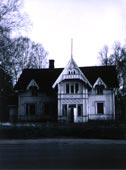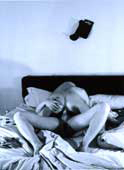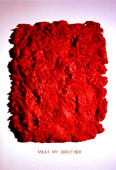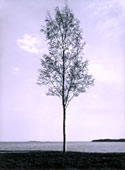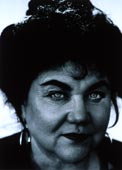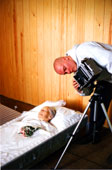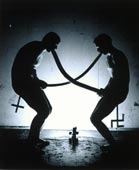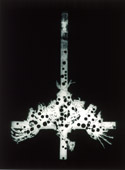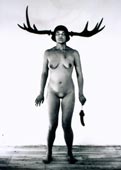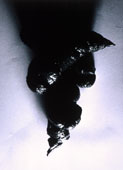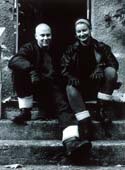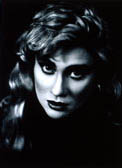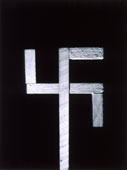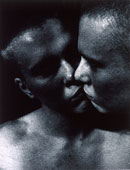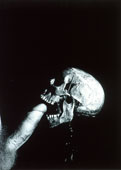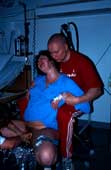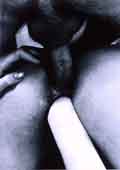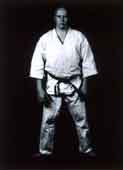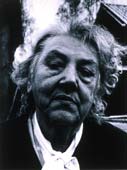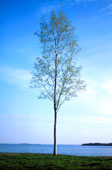Teemu
Mäki – Photography
HOME
/ etusivu
HOW TO BE A WOMAN OR A MAN OR
SOMETHING ELSE?
|
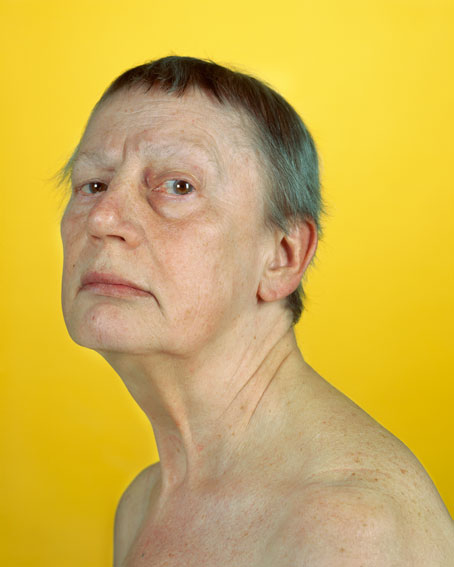
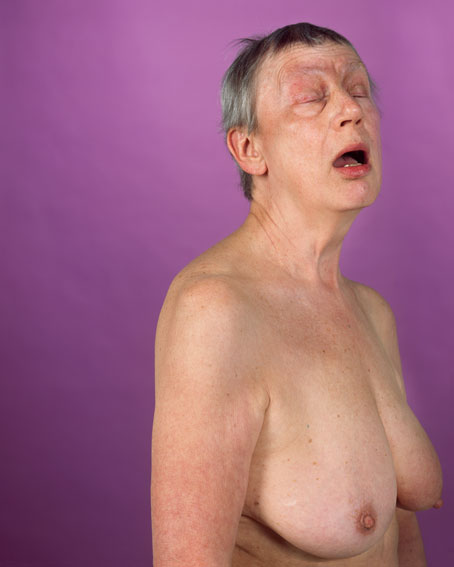
How
to Be a Woman or a Man or Something Else?
(2003–) is a photo series where I portray women and men
of different ages, convictions and professions.
In the series I try to make visible the internal and
external struggle people go through when they try to
live with the male and female gender roles our culture
has produced. Some of us just try to fit to the
expectations, some try to modify the given roles and
some directly rebel against them. My premiss is that
these roles have very little to do with biology and thus
what I'm investigating is a cultural, social, political
and philosophical struggle for identities and
empowerment. Gender roles are products of culture and
that's potentially both an oppressive and emancipatory
fact.
The oppressing side is that as gender roles are created
and defined in by social and political forces, they can
be – and usually are – as unequal, as unfair as any
other structure in society. A stereotypical gender role
in this sense is almost automatically a prison, that
restricts a person's personality and/or enables him/her
to restrict other peoples personalities.
The benign and emancipatory side of the same thing is
that a person is not at the mercy of his/her biological
or cultural gender, one is not "born to become a man (or
a woman)", but can instead understand that his/her
gender identity was and continually is formed by culture
and s/he can and should take the steering wheel in this
process – to be an active subject, not a printout of
cultural prejudice.
The other main theme in the series is mortality. For us
humans, sexuality is a gift from mortality. In the
spirit of Georges
Bataille I’d put it like this: Only
discontinuous beings, like us, who don’t procreate by
splitting or multiplying themselves, only we have need
and use for sexuality. And it’s only our kind of beings
who have this double relationship with death. We don’t
want to die, at least we tend to try to postpone it, and
yet without death we would not be and would not have the
kind of passions we have.
The photographs are extremely detailed, as I've shot
them usually with a large format camera, using 10 x 12,5
cm slide positive film. The exhibition prints are
usually of the size 160 x 128 cm or 100 x 80 cm, either
dipped in plexiglass (Diasec) or mounted on aluminium
with traditional wooden framing.
At the moment there are about 50 works in the series,
but as some of them are diptychs, triptychs or quartets,
all in all there are now about 80 pictures in the
series. The number of people photographed for these
works is now 64.
As the big format camera requires the models to sit or
stand as still as possible, the end results in a way are
quite similar to traditional portrait painting. The
poses, props, somewhat allegorical compositions and
monochrome color backgrounds that I've used in many
pictures also relate and refer to painting, which was my
first artistic discipline. On the other hand this long
series of fully lit and super-detailed photographs
equally belong to the tradition of documentary and
topological photography.
I've been exhibiting parts of this series in solo and
group shows in museums and galleries in Finland and
abroad since 2004, for example in Photographic
Gallery Hippolyte (Miten olla mies tai nainen?,
Helsinki, 8.2.–3.3.2013), Kunstihoone
Gallery
(Kuidas olla mees või naine?, 7.8.–31.8.2014),
Kuntsi
Art Museum
(Who Are You?, Vaasa, Finland, 13.2.–24.5.2015),
MUU
Gallery (Transgender, Helsinki, Finland,
24.5.–26.6.2018) and Mikkeli
Center of Photography (Miten olla mies tai
nainen tai jotain muuta?, 22.8.–21.9.2019).
–
At the moment I'm
preparing a photographic book about
the series
— Miten
olla mies
tai nainen ja
kuolevainen? / How to
Be a Woman or a Man or
Something Else? — with
Parvs
Publishing. To be
published in Autumn 2020
or Spring 2021.
|
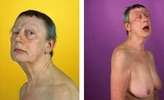

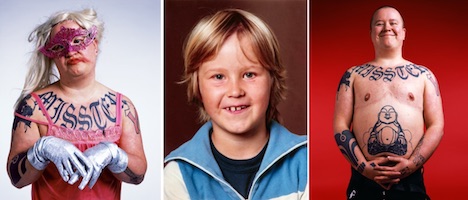
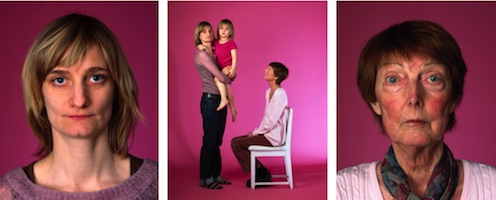



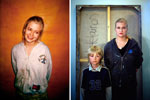
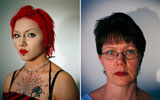



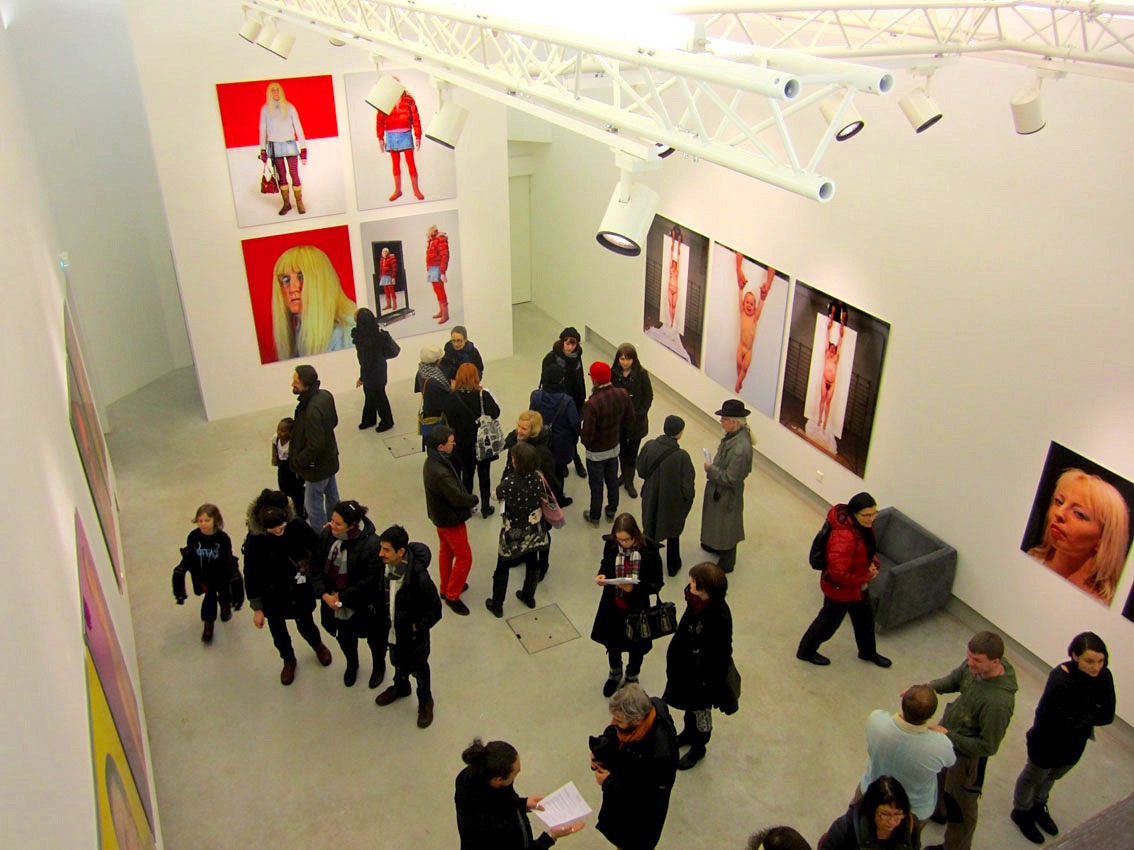
An
overview from Photographic Gallery
Hippolyte, Helsinki, 8.2.2013.
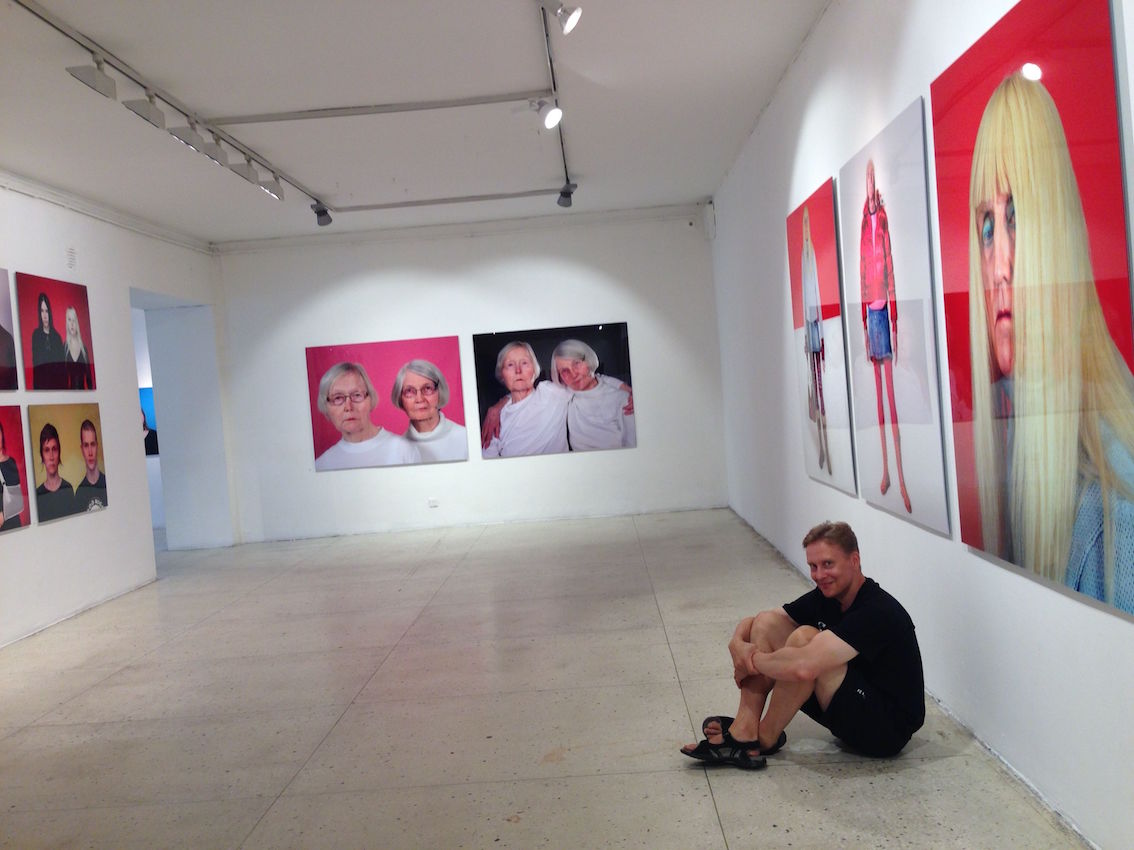
A view from my exhibition Kuidas
olla mees või naine?
/ How to Be a Woman or a Man? in Kunstihoone,
Tallinn, Estonia, 2014.
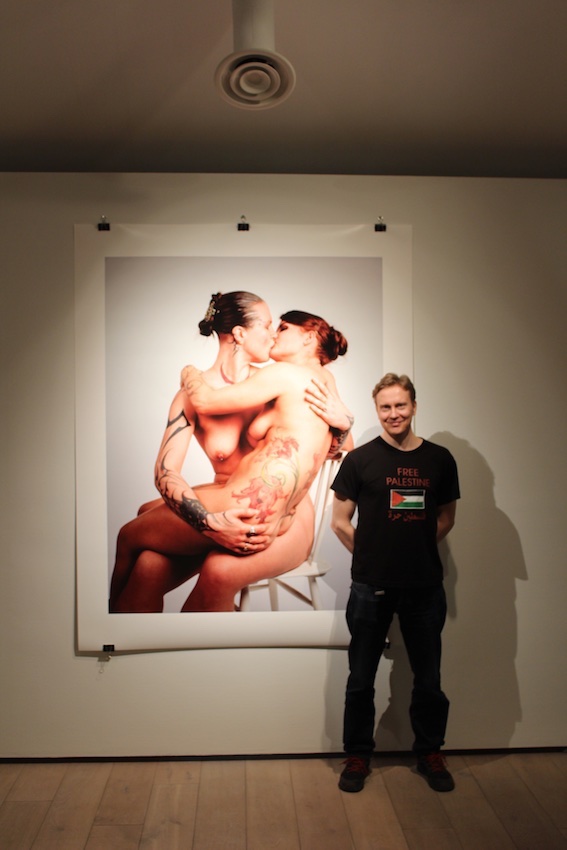
With the central panel of
The Kiss – Portrait of
Katariina Katla and Anna-Liisa Kankaanmäki
in Kuntsi Museum of Modern Art (Vaasa, Finland, 2015).
|
In June
2003 I did a photography workshop, BE
YOUR ENEMY, for children and teenagers in
eastern Helsinki. It was funded and organized by
KIASMA (Contemporary Art Museum) as a part of their
subURB festival of urban culture. In the workshop I
the task for each participant was to make a
self-portrait in three photographs, in other words,
a triptych. In the first photo one was to pose as
one's idol. In the second photo one was just
to be and reveal unpretentiously the mundane normal
self. In the third photo one was to pose as one's
enemy. I helped and guided and a team of three pros
(a photographer, a make-up and wig specialist and a
costumer) helped each participant to fulfill his/her
visions. In the end I myself did the assignment too.
Over
forty triptychs have been made in the Be Your Enemy workshops that I've
conducted with art historian / curator Arja
Elovirta since 2003.
Kuntsin
Modernin Taiteen museon tiedote BE YOUR ENEMY
-näyttelystä helmikuussa 2015:
"Ole vihollisesi -sarja
alkoi Kiasman järjestämästä lasten ja nuorten
valokuvatyöpajasta vuonna 2003. Lapset ja nuoret
tekivät siinä kolmiosaisia omakuvia Mäen ja Arja
Elovirran ohjauksessa. Kolmiosaisissa
omakuvatriptyykeissä tekijän ihanneminä on aina
vasemmalla, arkiminä keskellä ja painajaisminä
(tai vihollinen tai inhokki) oikealla.
Ensimmäisen työpajan tuloksista
innostuneena Mäki ja Elovirta järjestivät neljä
työpajaa lisää vuosina 2003–2005 Suomessa ja
Venäjällä. Työpajojen tuloksista koottu laaja
näyttely on ollut esillä kahdeksassa taidemuseossa
Venäjällä (Pietari, Moskova, Novosibirsk, Petroskoi,
Arkangeli, Murmansk) ja Suomessa (Vantaa, Tampere).
Kuntsin modernin taiteen museossa kuvat tulevat
esille laajempana valikoimana kuin koskaan aiemmin.
Teoksissa näkyy miten erilaisia
käsityksiä meillä on moraalista, politiikasta ja
siitä, mitä on hyvä elämä. Roolileikin varjolla
kuvien tekijät saivat mahdollisuuden olla tavallista
rehellisempiä ja uskaliaampia ja kertoa avoimesti
mistä unelmoivat ja mitä pelkäävät, keitä he
unelmissaan ovat ja keitä painajaisissaan. Yleisöllä
on sama mahdollisuus, sillä kun näkee muiden ihanne-
ja inhokkiminäkuvia, innostuu ehkä pohtimaan myös
omiaan.
Näyttelyn aikana Vaasassa järjestetään myös uusi Be
Your Enemy -työpaja, jossa syntyvät teokset ovat
esillä Vaasan Taidehallissa 21.3.–12.4.2015." |
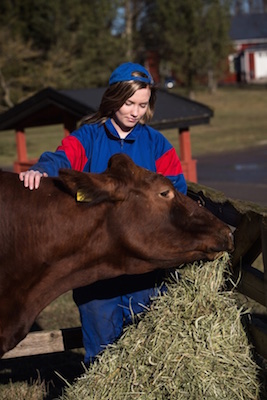
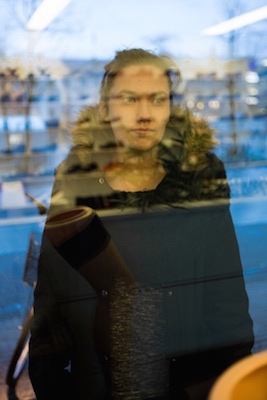
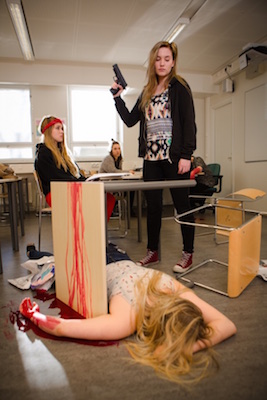
Saara Luoto's Be Your Enemy -triptych;
her self-portrait as her idol (farmer), as her normal self and
as her nightmare self (school shooter).
Testing Your Ideals and Identity
|
RELATIVISM IS
ABSOLUTELY TRUE
|
|
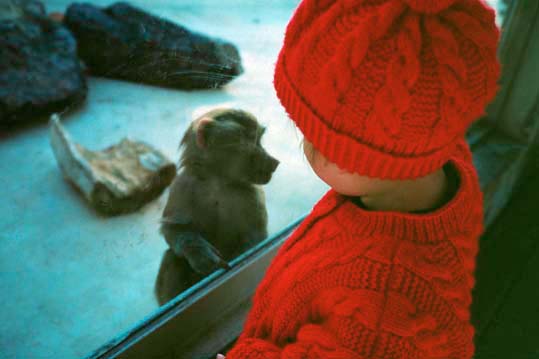 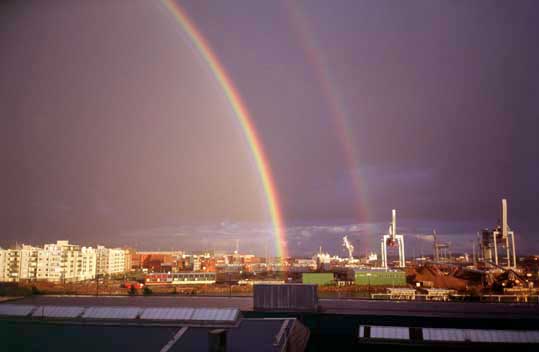
A work in progress (2000–). Photo diptychs
about how everything is relative.
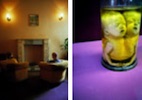
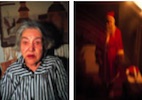
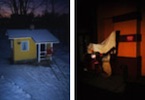
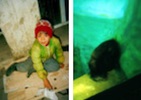



|
(In
These Pictures the Artist Teemu Mäki Personifying
the Divine Purposes of Life)
|
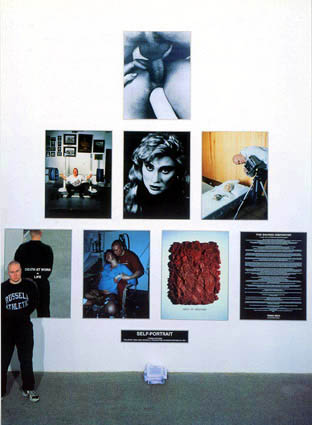
Photographs, texts, a mirror,
1995–1997, overall size 400 x 400 cm. On text panel on
in the pile of photocopies: THE
SACRED DISHWATER, which has been translated
to Finnish, Russian, Bulgarian, German, Danish and
Italian. The theme is another biblical task: "Name
your essential roles – or modes of being – the ones
you can't deny or escape. Learn to embrace them, to
the extent that you can call them divine."
The pictures are titled:
1:
Self-portrait as Bataille's eroticism.
2:
Self-portrait as a culturally male. Weightlifter.
3:
Self-portrait as a culturally female. Femme fatale.
4:
Self-portrait asan artist. Photographing my dead
grandmother (father's mother) on the day of her
burial.
5:
Self-portrait asyou. The mirror.
6:
Self-portrait as a procreator of life. Helping my wife
to give birth to our daughter.
7:
Self-portrait as a devourer of life. Meat my brother.
8:
Self-portrait as a rational verbalizer. The Sacred
Dishwater. |
A multipartite work in progress since 1988, photographs,
texts and a mirror.
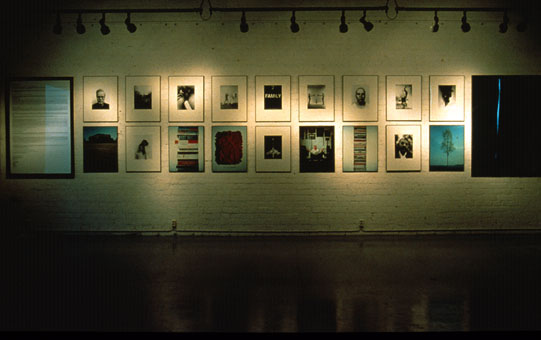
An early overview of This
Is My Family, a part of Death
At Work, Museum of Photography, Helsinki, Finland,
1993, 165 x 1000 cm
Excerpts from This
Is My Family and from other chapters of Death At Work. Click on the images to see
the larger versions:
DEATH
AT WORK is a multipartite work, not a
series. I wrote about its construction principle in
1994:
"Most of
my photos are multipartite works and consist not
only of photos but also of texts. I have meant the
texts and images to be of equal value. The texts are
inside the
works, they are not press releases, background info
or introductions to the "actual" works, the
pictures. Neither are the images illustrations of
the texts, instead, the content of the work is meant
to be built from the collision of images and texts.
Multipartite
work is not a series, series being a very common
concept in the tradition of photography. A series
usually consists of a set of variations on a
theme. Typical names of serieses in photography are
titles like Irish landscapes, or
Prostitutes
of St. Petersburg. From a serial work you
can pick an extract and it can stand on its own,
even though it is thought that the full meaning of
that extract only becomes visible when the whole
series is shown. I
have not made serial works at all, instead I have
made multipartite works, that rely completely on the
idea of montage,
on the idea that a collision of pictures produce a
meaning that can be far removed from the meaning
that any isolated picture could have. That's why you
can not show extracts from a multipartite work."
There
are approximately 70 pictures in the whole work, at
the moment. About 75% of the pictures in this work
are black and white photographs, most of them
40 x 30 centimeters each (with passe-partout
and frame 73,5 x 56,5 cm). They are printed on
fiber-based Ilford Multigrade 1k photographic paper
and treated with selenium toner for maximum archival
quality. The color photographs are usually sized 73
x 56 centimeters each (with frame 73,5 x 56,5 cm).
They are cibachrome prints. As the work is so large,
it has never been exhibited in its entirety, even
though it's meant to be an undivided whole. The
compromise I've made has been exhibiting extensive
"chapters" of it, the most frequently shown chapter
has been This
Is My Family.
|
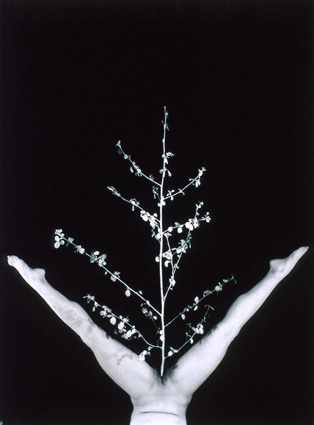
|
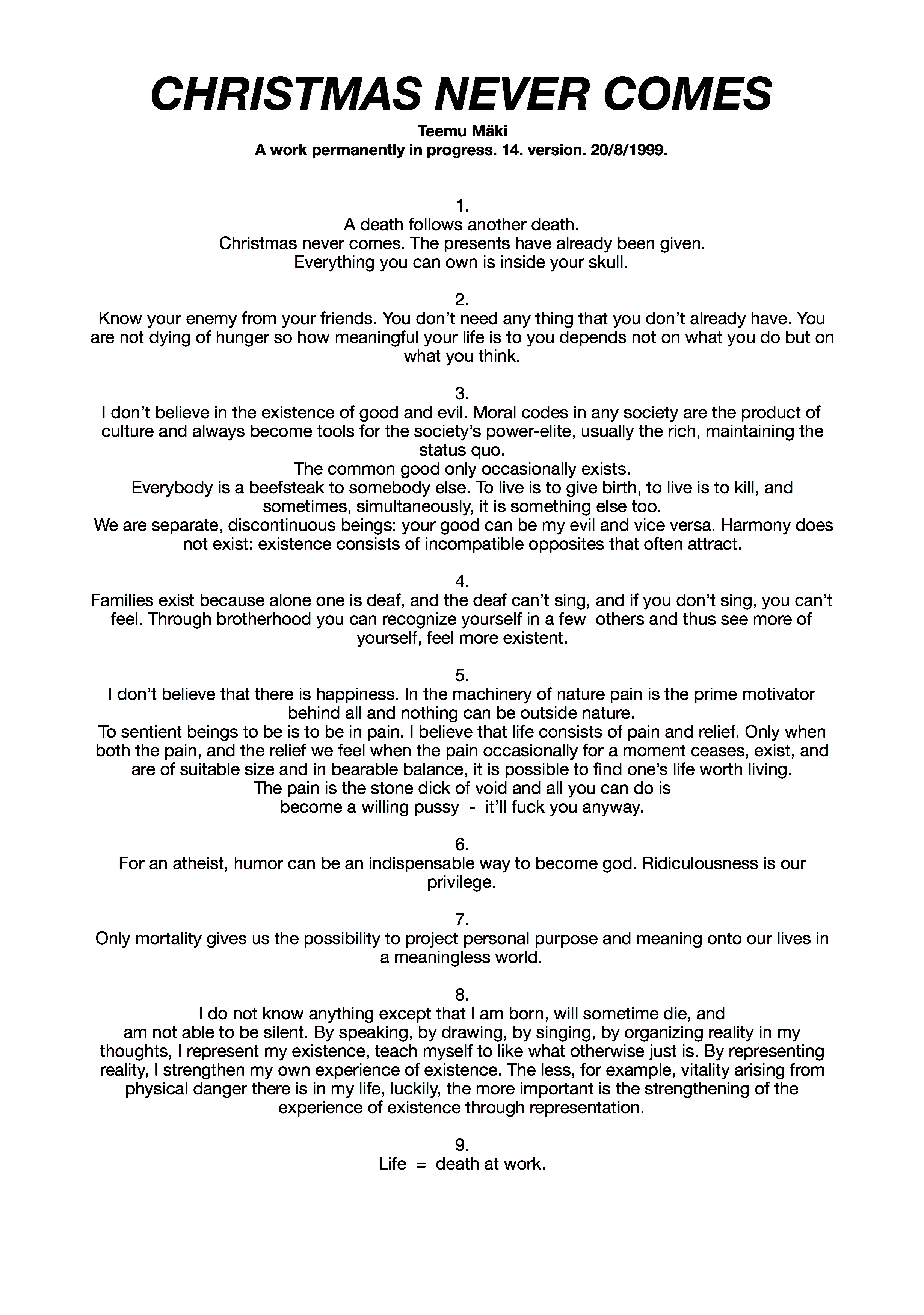 |
|
A
photo and a text. Occasionally exhibited with an
audio CD of music, Ein Tod Folgt dem Andern, thus
forming a triptych. The size of the photo and text
panel is 40 x 30 cm (74 x 57 including the frame. My
atheist/relativist version of the Ten Commandments
of the New Testament. I only came up with nine
anyway. This piece was central to my early work: its
photo and/or text popped up again and again in
various installations, performances, musics, videos
and multidisciplinary pieces.
EIN TOD FOLGT DEM ANDERN
A piece of music by Teemu Mäki and Max
Savikangas.
(6'30, included in the double CD: Max Savikangas –
Extraterrestial, UUCD102, 2003)
The lyrics of the music are a modified version of Christmas Never Comes:
"A death follows another death. Christmas never comes.
The presents have already been given.
Everything you can own is inside your skull.
Know your enemy from your friends:
You don't need any thing that you don't already have.
You are not dying of hunger, so how meaningful your
life is to you
depends, not on what you do but on what you think.
Consumerism's comfort doesn't make you come but says
instead:
"Don't worry, be fatty, you're not ill, you just need
a sleeping pill!"
Christmas is a celebration and promise of eternal life
and happiness...
...but only mortality gives us the possibility to
project personal purpose
and meaning onto our lives in a meaningless world.
And to be alive is to be in pain.
Death at work =
life."
|
|

















































